Les Poulettes Batignolles, Paris–A Great French Bistro with a Catalan Accent, B+
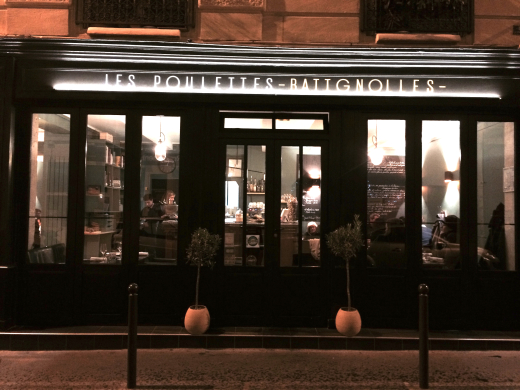
After working for twelve years in Barcelona, Parisian-born chef Ludovic Dubois, son of the distinguished fromagere Martine Dubois, has returned to Paris and opened Les Poulettes Batignolles. It’s a good-looking modern bistro in a quiet side street with a very appealing Catalan inflected contemporary menu. “I really like the way the Catalans marry seafood and meat,” says Dubois, who runs the kitchen while his Catalan wife Judith Cercos, former sommelier at the Mandarin Oriental hotel in Barcelona, supervises the dining room and excellent wine list. “I also developed an appreciation of arroz (rice), in all its many possible incarnations while living in Catalonia, an experience that tutored me in the Mediterranean palate,” adds the amiable Dubois, who apprenticed with Jacques Cagna and Michel Rostang before going off to Spain, where he cooked at the El Palace Hotel, among other kitchens.
Going to meet Marie, the lovely friend who tipped me off to this new address, for dinner on a frosty early winter night, I found myself thinking about how much I like Les Batignolles, a dense village-like neighborhood in the 17th arrondissement that only became part of Paris by decree of Napoleon III in 1860 and which is bisected by the train cut going into the Gare Saint Lazare. The old train yards at the north end of the neighborhood were intended to become the site of the Olympic village, had Paris’s bid for the 2012 games succeeded. Instead, they’re being redeveloped into a new urban neighborhood centered on a large garden named in honor of Martin Luther King. What will doubtless change this part of the city a lot is the arrival of all the courts now found on the Ile de la Cité in a new set of buildings, La Cité Judiciaire, which will open in 2017. For the time being, though, it’s a companionable and unpretentious old Paris neighborhood with a real vie de quarter, or neighborhood life, and with its chic pair of teal blue dining rooms, retro lighting fixtures, warm friendly service, and interesting menu, Les Poulettes Batignolles has immediately become a local hit with an enthusiastic following of regulars.
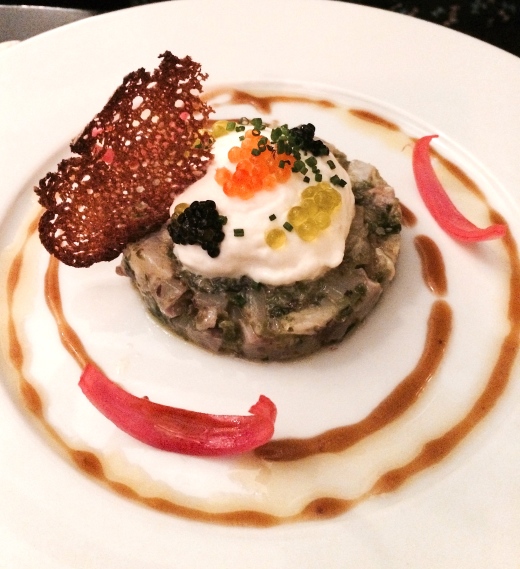
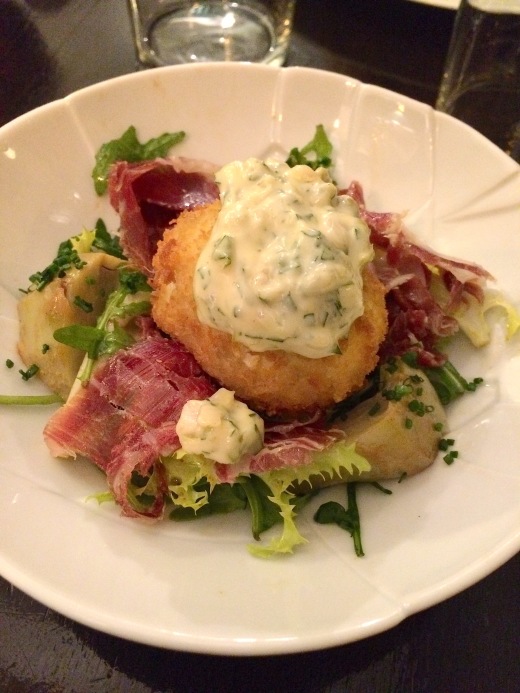
Since Marie once lived in Barcelona, and I’ve spent a lot of time there through the years and it’s one of my favorite cities, it was fun to discover the original but subtle cooking of Dubois and decipher the Catalan influences in various dishes. The Catalan love of seafood–Barcelona is still going mad for sushi and ceviche–was beautifully expressed by an impeccably fresh sea bass tartare seasoned with seaweed and garnished with several types of fish eggs, while the artichoke hearts and salad leaves that came with a coddled egg in bread crumbs with tartare sauce–a perfect tapas sort of dish–reminded me of the tidy lovingly tended vegetable farms seen from the airport train that still fill the flat fertile plains between the city and its airport. This proximate patchwork of farms also explains why the produce in Barcelona is so good. In Paris, however, it comes from the rue de Levis market street where Dubois does his shopping every morning. “My cooking is completely market-driven, so I really need to see and smell and touch the produce myself. It just wouldn’t work for me to be supplied by Rungis (the big wholesale market outside of Paris, bien sur),” said the chef. One way or another, I’m a hopeless sucker for tartare sauce, especially when it’s homemade–this might be explained by the fact that I liked this condiment as much if not more than the fried-clam strips once sold by Howard Johnson’s, a once-upon-a-time sincere Boston-based restaurant chain specializing in respectable quality American comfort food.What Howard Johnson’s never had, however, was the rich, melted-in-your-mouth jamon, or ham, which melded this dish together with a plucky porcine punch. With the possible addition of some good Cabrales, or Spanish blue cheese, I’d happily eat this perfectly pitched umami-rich soft ball for lunch everyday for the rest of my life.
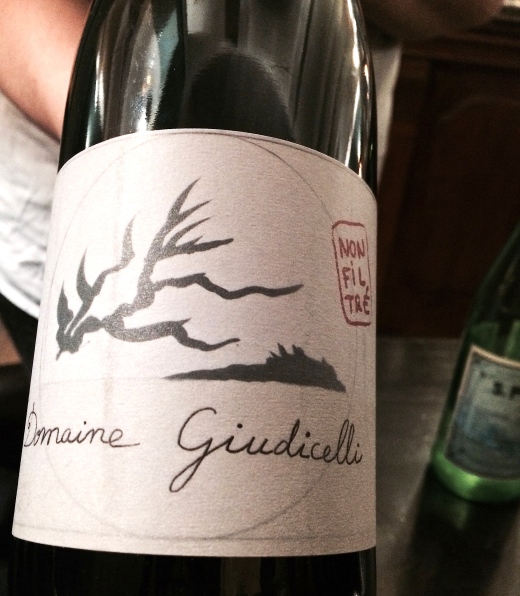
Beyond the pleasure of Marie’s company–she’s not only beautiful but absolutely fascinating–the recurring reason for the strong sense of well-being all during my meal at this restaurant was the warm unselfconscious reflexive hospitality of Judith Cercos, a woman who deeply loves both wine and seeing the pleasure her shrewd choices bring to other people. I was too engaged by Marie and Bruno to break away from the good time I was having at the time, but later, I did find myself musing on the odd Paris phenomenon of restaurants that are run by people who would appear to find their customers a dreadful nuisance just for the fact that they’ve come through the door–Jadis and Saturne came to mind. In any event, the Domaine Giudicelli wine Judith served with our main courses was one of the best viniferous discoveries of the year for me, because I’d never have first guessed that it was a Corsican Patrimonio, because it was so supple and suave, but when we all paid it the attention it deserved, it had a lot of Mediterranean character and was a brilliant food wine.
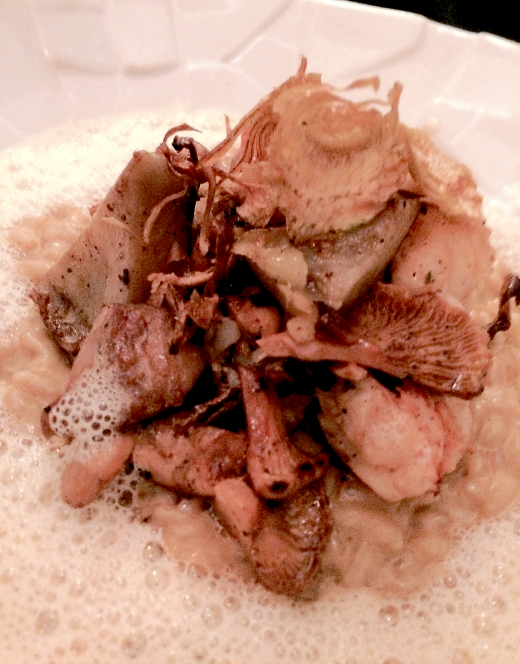
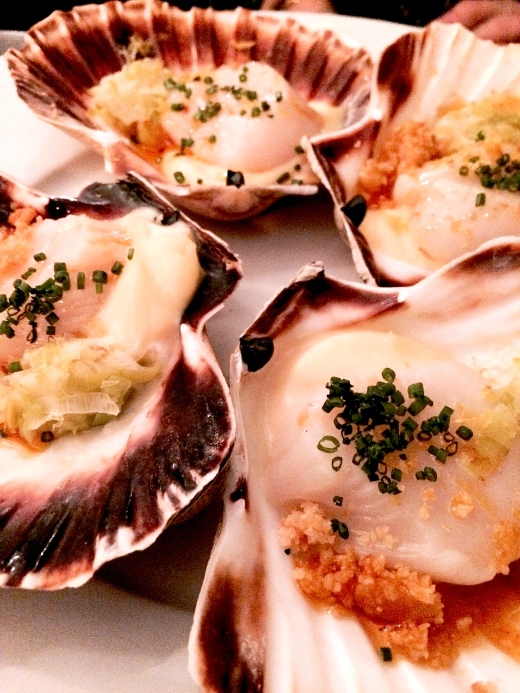
In the quiet calendar of Parisian gastronomic pleasures I’ve learned so deeply it’s become the second much-loved almost subliminal alphabet that informs my daily life, few things are more welcome than the gusty arrival of seasonal crustaceans like oysters and scallops on the city’s menus. Perhaps with this in mind, but also likely guided by compasses of nostalgia with different true norths–hers, an old relationship; his, a lifetime of holidays spent on Catalan beaches over a span of more than forty years from the days of tents and ice cream cones purchased by Father to friskier adventures in Barcelona and Sitges–Marie and Bruno had the ‘creamy’ rice garnished with grilled artichoke hearts, mushrooms, squid, octopus, lobster and langoustines. What are I yearned for were the sweet fleshy Erquy scallops, which came cooked in their shells with breads crumbs, buttery leeks and a natty garnish of chives. “Rather nice, isn’t it, to be in a dining room where a pair of tattooed forearms fits in just as well as an Hermes pocketbook, isn’t it?” Bruno said, and it was true that there was a rare and bracing variety of Parisians around us who were keenly enjoying their food as much as we were.
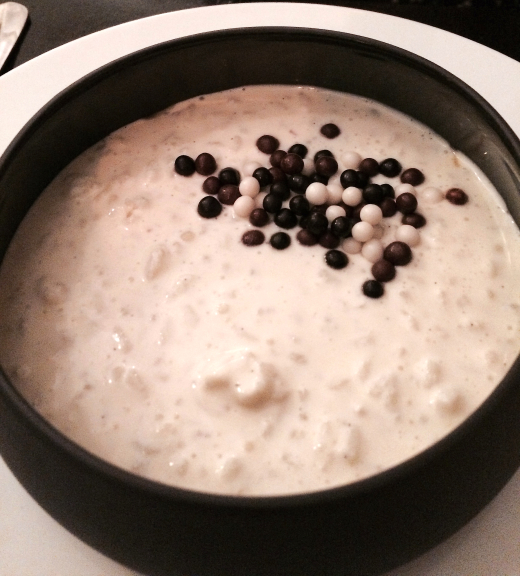
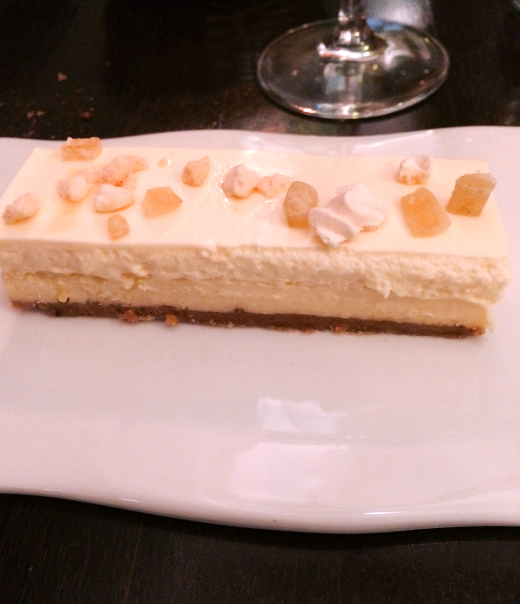
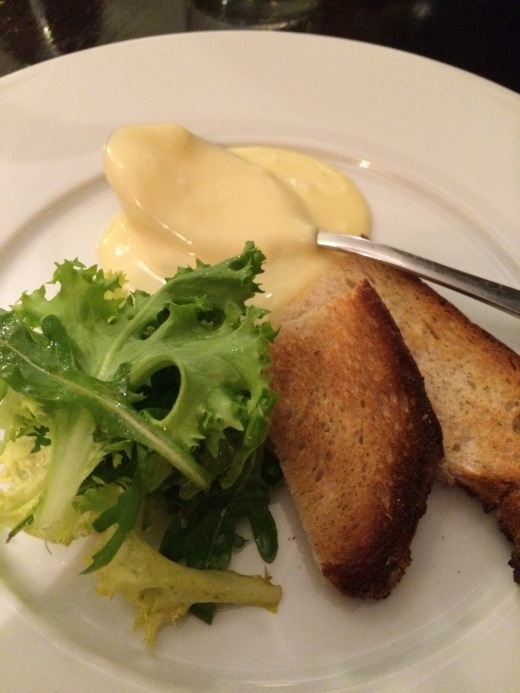
Since my sweet tooth, such as it exists, keens most to all forms of burnt sugar, aka caramel, then fruit, and finally really potent dark chocolate, I let Bruno and Marie rush in when it came to choosing a dessert–vanilla rice pudding with dulce de leche for her, and New York cheesecake for Bruno, who’s been obsessed by same ever since a first ecstatic artery-clogging encounter at the Carnegie Delicatessen in New York City a few months after we’d first met 17 years ago. Oh. And me? I know what a serious cheese mistress Ludovic Dubois’s Mom Martine is, so there was no way I’d pass up her Vacherin, that sublimely runny high-altitude cow’s milk dairy balm that’s in season right now, especially since it meant I could lay claim to the rest of the Patrimonio.
After dinner Ludovic Dubois came out of the kitchen to greet his customers, and watching him with Judith Decros, I finally got the X factor that makes Les Poulettes Batignolles so irresistible. This restaurant is an expression of their love affair, which they kindly decided to share with all comers. So if you want a really good and original won’t-break-the-bank holiday meal this year, I think you’d do very well at this charming table.
10 rue de Chéroy, 17th Arrondissement, Paris, Tel. 01-42-93-10-11. Metro: Rome or Villiers. Closed Sunday and Monday. Open Tuesday to Saturday for lunch and dinner. www.lespoulettes-batignolles.fr Average lunch 30 Euros, Average dinner 40 Euros.




